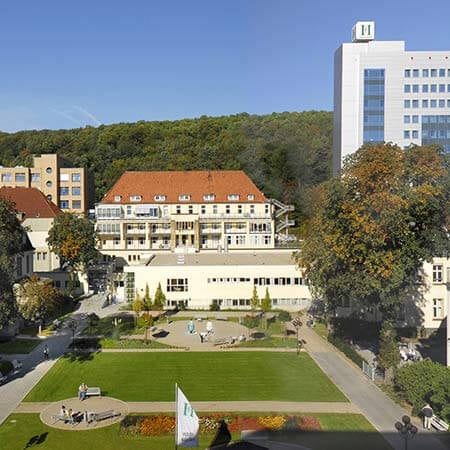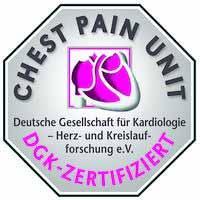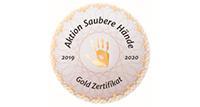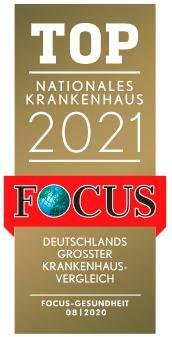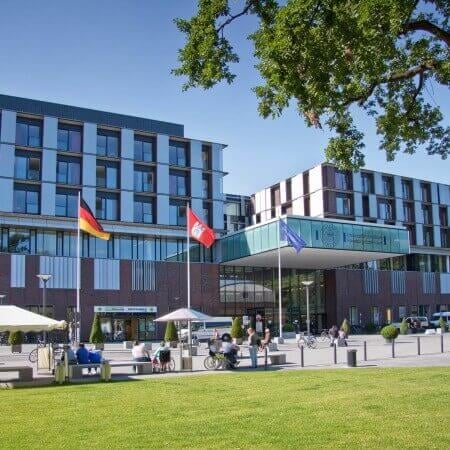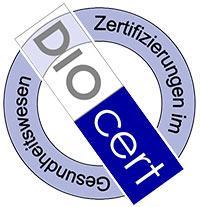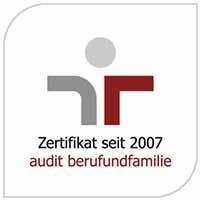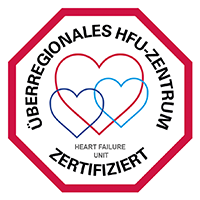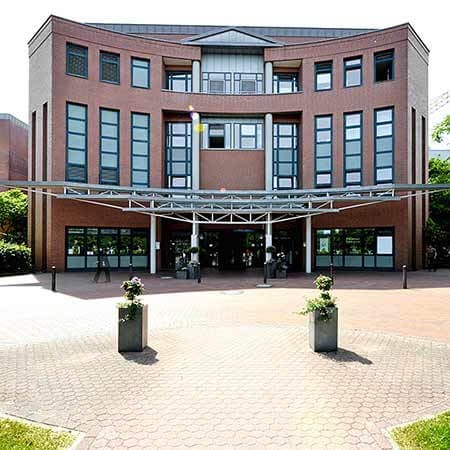Left bundle branch block (LBBB) is a violation of the conduction of electrical impulses along the left ventricle. The left bundle branch has two further branches. If both branches are blocked, then a violation of the heart conduction can have a bad effect on blood circulation, since parts of the myocardium contract asynchronously. In case of dizziness attacks, a severe block of two or three branches of the bundle of His (including the right bundle branch), as well as when LBBB is combined with AV block or heart failure, patients undergo a pacemaker implantation. To undergo both diagnostics and treatment of pathology, you can go to one of the countries offering advanced medicine.
Content
- The essence of the disease
- Causes of the disease and comorbidities
- LBBB after myocardial infarction
- LBBB and heart failure
- Treatment of LBBB in heart failure
- Treatment of LBBB without heart failure and coronary artery disease
- Why is it worth undergoing the treatment of LBBB abroad
- Treatment in Europe at an affordable price
The essence of the disease
For the heart to contract regularly, electrical impulses must be generated in it. Normally, they form in the sinoatrial node, which is located in the right atrium. These impulses then go to the atrioventricular node located in the lower part of the interatrial septum, in fact, on the border of the atria and ventricles.
From this node, two branches of the bundle of His, left and right, go down. They conduct impulses to the left and right ventricles, respectively. The left ventricle is larger, because it gives rise to a large circle of blood circulation and is actually responsible for the blood supply to all tissues of the body. Therefore, the bundle branch is divided into two fascicles in this area: anterior and posterior.
Thus, the bundle of His is a section of the cardiac conduction system responsible for the propagation of electrical impulses through the ventricles. It is divided into three parts: the right bundle branch, as well as the anterior and posterior fascicles of the left bundle branch. LBBB may cause the block of either one or both bundle branches.
Causes of the disease and comorbidities
LBBB is a common arrhythmia. Its risk increases with age. In 0.5% of the population, it can be detected with electrocardiography. LBBB is usually asymptomatic, but it worsens the prognosis for other heart diseases.
In most cases, the bundle branch block occurs against the background of the following pathologies:
- Arterial hypertension.
- Coronary artery disease.
- Dilated cardiomyopathy.
- Heart failure.
Although the bundle branch block itself usually does not manifest any symptoms, most patients suffer from manifestations of the underlying pathology, due to which the conduction of the heart is impaired. A simultaneous block of two fascicles of the left bundle branch significantly increases the risk of complete atrioventricular block. This is a violation of cardiac conduction, in which impulses no longer pass through the atrioventricular node. As a result, the ventricles and atria contract in different rhythms, independently of each other, and the frequency of ventricular contractions is significantly reduced.
The maximum risk of complete AV block is observed in patients with the simultaneous block of two fascicles of the left bundle branch. The likelihood of developing pathology in such patients reaches 1.5% per year.
LBBB can be functional and organic.
With the functional type of block, it is temporary. Although the conduction of impulses is impaired, the cardiac conduction system itself is preserved. With the elimination of the pathogenetic factor, the heart conduction can be restored, and the block will no longer be recorded on the ECG.
Here are the causes of functional block:
- Inflammation of the heart (myocarditis).
- Previous surgical interventions or invasive procedures on the heart (the result of edema of the heart muscle).
- Hyperkalemia (high serum potassium levels).
- Poisoning.
- Side effects of medicines.
- Chest trauma.
- Hormonal imbalance.
Organic LBBB is associated with damage to the cardiac conduction system. It cannot be restored. In 50% of cases, the cause of organic block is ischemic heart disease, including myocardial infarction. In 15% of cases, it is not possible to establish the cause. In other cases, LBBB causes myocardial hypertrophy (for example, against the background of valvular heart disease), heart damage during operations, transcatheter manipulations, rheumatic diseases, myocarditis, and other pathologies.
Among the iatrogenic (medical) factors causing LBBB, in the first place is transcatheter aortic valve implantation. This is a minimally invasive procedure for aortic valve stenosis (narrowing). An artificial valve is placed through the vessels in the leg. As a result of the procedure, every third patient develops LBBB. In 50% of cases, it is reversible. Even if LBBB is irreversible, in three cases out of four it is not severe, does not affect hemodynamics at all, or has a minimal effect on it. Nonetheless, one out of four patients with irreversible LBBB after transcatheter aortic valve implantation requires a pacemaker (artificial pacing device).
LBBB after myocardial infarction
The patients who have suffered myocardial infarction develop LBBB in 5% of cases. This is about half as common as the right bundle branch block. The worst prognosis is with the bundle branch block that affects both branches of the bundle of His. Such patients have a lower left ventricular ejection fraction (indicating a violation of the pumping function of the heart) and the risk of death is higher in the first 30 days after myocardial infarction.
The patients suffering from LBBB after myocardial infarction have a higher risk of death within 12 months. Nonetheless, this is connected not only with the very fact of the block. Another cause is that people who are diagnosed with LBBB are older on average and have a higher number of underlying heart conditions.
The bundle branch block detected for the first time affects the treatment tactics in patients with myocardial infarction. It is considered to be analogous to the elevation of the ST segment on the cardiogram. This means that the patients suffering from myocardial infarction and LBBB are indicated to have myocardial revascularization. Depending on the clinical situation, this may be:
- Thrombolysis (clot dissolution).
- Percutaneous coronary intervention (dilatation of the coronary vessels with a balloon followed by placing stents inside the arteries, which are frames that keep the vessels open).
- Coronary artery bypass grafting is an open surgical intervention for creating a bypass for blood flow to deliver blood to the heart.
The reasons for these recommendations are that:
- The presence of the left bundle branch block is associated with more extensive myocardial damage as a result of the heart attack.
- LBBB changes the cardiogram, so the doctor may not always be able to discern how much the ST segment has altered.
LBBB and heart failure
Left bundle branch block occurs in one in four patients suffering from heart failure. This is a poor prognostic factor. LBBB itself is not dangerous because it has minimal effect on left ventricular contractility. Nevertheless, the contractile function deteriorates, and this has a critical effect on the patients with left ventricular dysfunction. With the presence of LBBB, a diastole (the period of heart relaxation) is shortened and the contractility of the ventricular septum worsens.
LBBB entails asynchrony. This means that different areas of the left ventricle contract at different times. This results in the aggravation of both systolic (blood ejection) and diastolic (blood filling) dysfunction. If heart failure develops due to coronary artery disease, then LBBB increases the risk of severe arrhythmias.
Heart failure and LBBB are two conditions that mutually exacerbate each other. Asynchrony that develops against the background of LBBB aggravates the heart dysfunction. In turn, the progression of heart failure aggravates impaired conduction of impulses in the left ventricle.
Treatment of LBBB in heart failure
To treat LBBB and heart failure, doctors conduct cardiac resynchronization therapy. Here are the indications for using this method for the treatment of left bundle branch block:
- The presence of III-IV functional class heart failure.
- The duration of the QRS complex on the cardiogram is more than 120 ms (indicates a slow propagation of impulses through the ventricles).
- Left ventricular ejection fraction is less than 35% (impaired pumping function of the heart).
- The patient's life expectancy is more than 1 year.
In addition, the possibility of cardiac resynchronization therapy for LBBB is considered in patients even with 2 functional class heart failure, if the left ventricular ejection fraction reaches 30%, and the QRS complex is 130 ms or more.
Cardiac resynchronization therapy involves the implantation of the pacemaker with three leads. One of them is placed in the right atrium, the second in the right ventricle, and the third in the left ventricle. The body of the device is placed under the skin of the thorax through a small incision making up 4-5 cm. The pacemaker leads are inserted into the heart through the blood vessels.
The essence of the treatment method is that the device regulates the heart rhythm. It regularly sends electrical impulses that are delivered via implanted pacemaker leads to different chambers of the heart. As a result, all parts of the myocardium contract synchronously.
Resynchronization therapy allows achieving the following results:
- Improved pumping function of the heart.
- Increased efficiency of hemodynamics.
- Relief of heart failure symptoms.
- Reduced number of hospitalizations.
- Increased life expectancy.
The method works better for the treatment of the left bundle branch block than for the right bundle branch block. The effect is even better with a more significantly increased duration of the QRS complex.
Treatment of LBBB without heart failure and coronary artery disease
LBBB itself is rarely an indication for surgery. Although it increases the risk of other heart pathologies and aggravates their clinical course, the block itself of one or two branches of the left bundle branch usually does not cause any symptoms.
Even if both branches are blocked, this does not completely stop the impulses in the left ventricle. They just detour. The detour takes more time, but all the chambers of the heart contract regularly, and severe arrhythmias do not develop.
But there are situations when LBBB alone without a combination with another pathology requires surgical treatment. It consists in the implantation of a pacemaker. The indications for implanting this device for LBBB are as follows:
- Syncope (fainting) with signs of poor impulse conduction through the ventricles according to electrophysiological data. Before the pacemaker implantation, the patient is carefully examined for possible other causes of dizziness and fainting. To determine if syncope is due to arrhythmia, long-term heart rate monitoring is done.
- Block of two fascicles of the left bundle branch in combination with syncope.
- Alternating bundle branch blocks. This means that blocks of two out of the three branches of the bundle of His are detected at once at different points in time. Moreover, each of the three branches periodically does not conduct pulses. For example, during one examination, the doctor detects the block of both fascicles of the left bundle branch, and in the next one he simultaneously diagnoses the right bundle branch block and the left anterior fascicular block.
- Combination of the block of two fascicles of the left bundle branch with a mild 1st-2nd degree atrioventricular block. These patients have a high risk of progression to severe AV block, including complete AV block, and an increased likelihood of sudden cardiac death.
The pacemaker implantation contributes to the heart rhythm normalization, as well as to the decreased risk of severe arrhythmias and sudden cardiac death. Most of the symptoms disappear, including dizziness attacks and loss of consciousness, if caused by impaired cardiac conduction. The patients have increased exercise tolerance and better quality of life.
Why is it worth undergoing the treatment of LBBB abroad
You can undergo both diagnostics and treatment of left bundle branch block in one of the countries offering advanced medicine. The treatment of LBBB abroad will be safe and effective. The surgical interventions are performed with the use of minimally invasive techniques, so patients do not need long-term recovery.
There are several reasons for you to undergo the treatment of left bundle branch block abroad:
- High-precision diagnostics that allows determining the cause of cardiac conduction disorders.
- Whenever possible, the treatment is aimed at eliminating the cause of the arrhythmia. Its elimination restores the normal heart rhythm.
- No overtreatment: you will not undergo the pacemaker implantation surgery if LBBB is not severe, does not cause symptoms, and does not affect hemodynamics.
- Successful treatment of concomitant diseases that caused the block: coronary artery disease, valvular heart disease, heart failure.
- Individual selection and fine tuning of the pacemaker, which will ensure the maximum quality of life with the minimum risk of complications.
- Comfortable conditions in European hospitals, quality care and full recovery after surgeries and invasive procedures.
The countries with quality medicine provide more reliable treatment with better results, minimal trauma and a low risk of complications.
Treatment in Europe at an affordable price
To undergo treatment of left bundle branch block in one of the European hospitals, you can use the services of the BookingHealth specialists. On our website, you can find out the cost of treatment in Europe, compare prices and book a medical care program at a favorable price. The treatment in Europe will be easier and faster for you, and the cost of treatment will be significantly lower.
You are welcome to leave your request on the Booking Health website. Our consultant will contact you within 24 hours. A medical tourism facilitator from the Booking Health company will take care of the organization of your trip for treatment in Europe. We will provide the following benefits for you:
- We will select a hospital for treatment in Europe, whose doctors specialize in the treatment of left bundle branch block and achieve the best results.
- We will help you overcome the language barrier and establish communication with your attending physician.
- We will reduce the waiting time for the medical care program. You will receive medical services on the most suitable dates.
- We will reduce the price. The cost of treatment in European hospitals will be lower due to the lack of overpricing and additional coefficients for foreign patients.
- We will take care of all organizational issues, such as paperwork, hotel booking, transfer from the airport to the hospital. An interpreter will accompany you abroad.
- We will prepare a program and translate medical documents. You do not have to repeat the previously performed diagnostic procedures.
- We will keep in touch with the hospital after the completion of treatment in Europe.
- We will organize an additional medical examination and treatment in a European hospital, if required.
- We will buy medicines abroad and forward them to our native country.
The best specialists in the world will take care of your health. The Booking Health employees will help you reduce the cost of treatment, organize your trip, and you will be able to fully focus on restoring your health.
Authors: Dr. Nadezhda Ivanisova, Dr. Sergey Pashchenko
